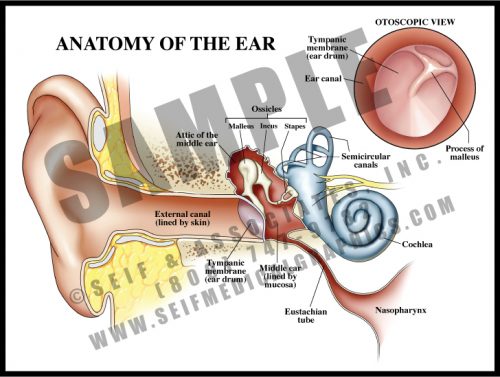- The external ear acts as a collecting device for sound waves, focusing them into the canal.
- External sound waves cause vibration of the tympanic membrane (ear drum). The vibrating membrane moves the three ossicles of the middle ear (malleus, incus, and stapes) which transfer the vibration to branches of the vestibulocochlear nerve (cranial nerve VIII) within the cochlea.
- Motion and balance are detected by three fluid-filled canals in the temporal bone. Oriented in three perpendicular planes, the canals contain tiny hair cells that pick up fluid movement with motion of the head. This information is transmitted through the vestibular portions of the nerve to the appropriate portions of the brain.
